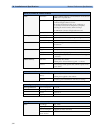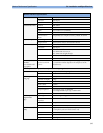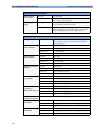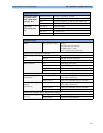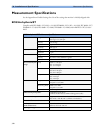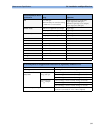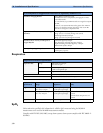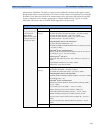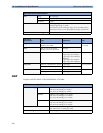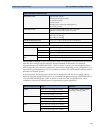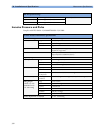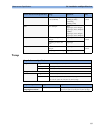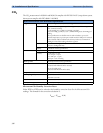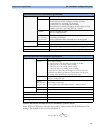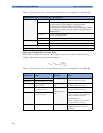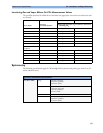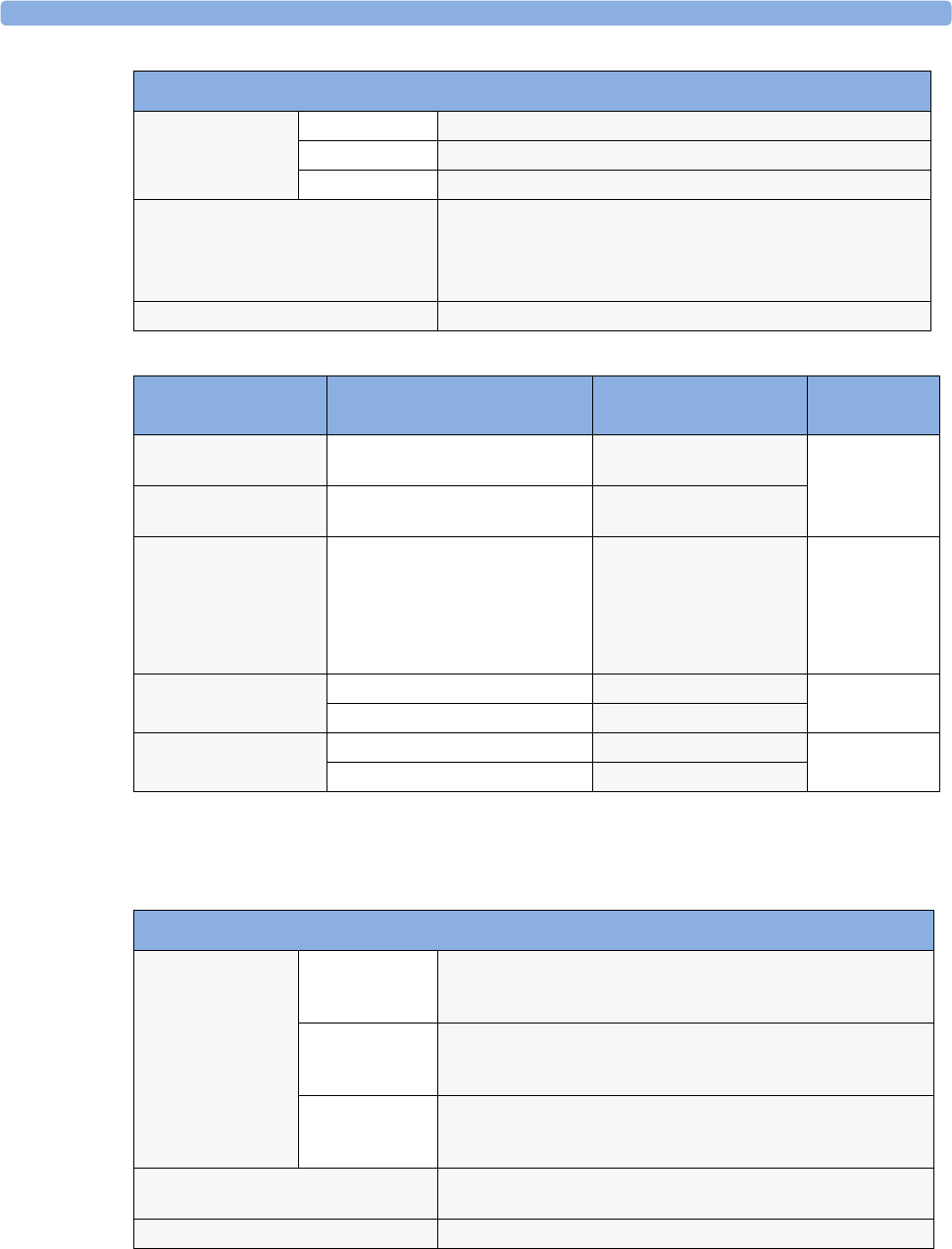
34 Installation and Specifications Measurement Specifications
352
NBP
Complies with IEC 60601-2-30:1999/EN60601-2-30:2000.
Pulse Range 30 to 300 bpm
Accuracy
±2% or 1 bpm, whichever is greater
Resolution
1 bpm
Sensors Wavelength range: 500 to 1000 nm
Emitted Light Energy: ≤ 15mW
Information about the wavelength range can be especially useful to
clinicians (for instance, when photodynamic therapy is performed)
Pulse Oximeter Calibration Range 70 - 100%
SpO
2
Alarm
Specifications
Range Adjustment Delay
SpO
2
Adult: 50 to 100%
Pedi/Neo: 30 to 100%
1% steps (0, 1, 2, 3,... 30)
+ 4 seconds
Desat Adult: 50 to Low alarm limit
Pedi/Neo: 30 to Low alarm limit
1% steps
Pulse 30 to 300 bpm Adult:
1 bpm steps (30 to 40 bpm)
5 bpm steps (40 to 300 bpm)
Pedi/Neo:
1 bpm steps (30 to 50 bpm)
5 bpm steps (50 to 300 bpm)
max. 14 seconds
Tachycardia Difference to high limit 0 to 50 bpm 5 bpm steps max. 14 seconds
Clamping at 150 to 300 bpm
5 bpm steps
Bradycardia Difference to low limit 0 to 50 bpm 5 bpm steps max. 14 seconds
Clamping at 30 to 100 bpm
5 bpm steps
SpO
2
Performance Specifications
NBP Performance Specifications
Measurement Ranges Systolic Adult: 30 to 270 mmHg (4 to 36 kPa)
Pedi: 30 to 180 mmHg (4 to 24 kPa)
Neo: 30 to 130 mmHg (4 to 17 kPa)
Diastolic
Adult: 10 to 245 mmHg (1.5 to 32 kPa)
Pedi: 10 to 150 mmHg (1.5 to 20 kPa)
Neo: 10 to 100 mmHg (1.5 to 13 kPa)
Mean
Adult: 20 to 255 mmHg (2.5 to 34 kPa)
Pedi: 20 to 160 mmHg (2.5 to 21 kPa)
Neo: 20 to 120 mmHg (2.5 to 16 kPa)
Accuracy Max. Std. Deviation: 8 mmHg (1.1 kPa)
Max. Mean Error: ±5 mmHg (±0.7 kPa)
Heart Rate Range 40 to 300 bpm



